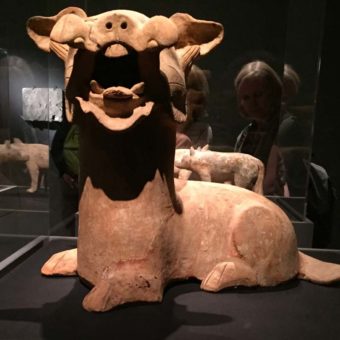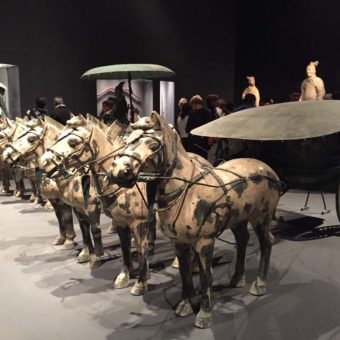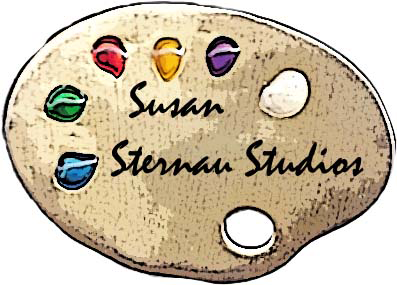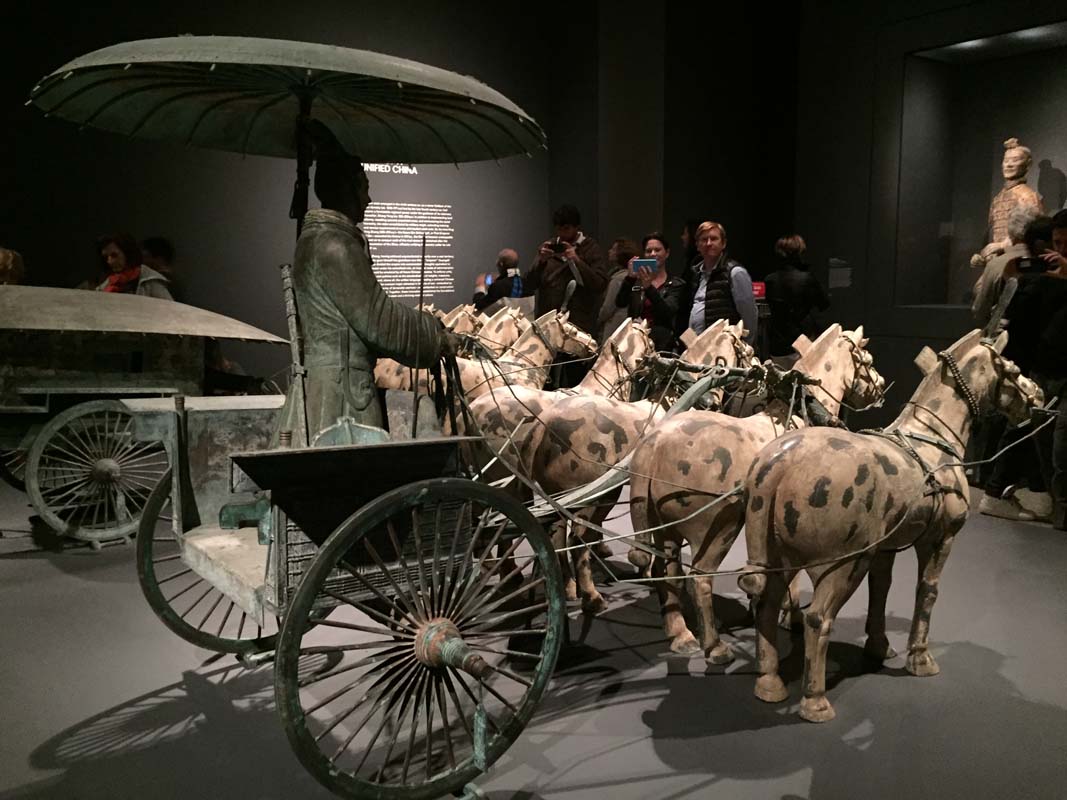Art Review
Ancient Animals from the Age of Empires
I just saw the most amazing exhibit of ancient Chinese art at the Metropolitan Museum of Art in New York. The Age of Empires: Chinese Art of the Qin and Han Dynasties, includes a stunning display of ancient animals, people, and even model houses made of earthenware that were recovered from royal tombs in Western China. All the rare objects in the exhibit are drawn from 32 museums in the People’s Republic of China.
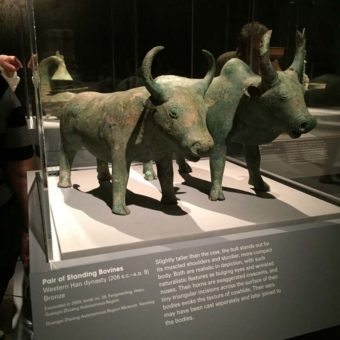
Earthenware Animal Sculptures
Many of the ancient animal sculptures are from the Han Dynasty which consolidated power in China from 206 B.C. – A.D. 99. Other objects are from the Qin Dynasty (221-206 B.C.) It is amazing that objects from two thousand years ago are so beautifully preserved. What is even more amazing is the life-like realism of the animals. They are so alive that you almost expect them to start wandering around the galleries.
Supplies for the Afterlife
People of the Han Dynasty believed that life did not end at death. Life continued into the eternal world where it was important to come prepared with all of life’s comforts.
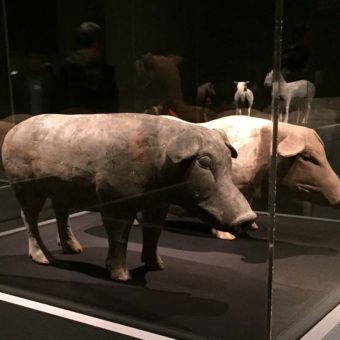
Naturally, this included all the most common domesticated animals of the day: chickens, pigs, dogs, horses, bovines and goats. Of course, worldly goods must be protected in the afterlife, too. Therefore the tombs of ancient Han emperors also contained a terra cotta army of 2,400 life-size warriors as well as horse drawn chariots. Horse drawn chariots and infantry soldiers were the most important parts of the Han army. Such armies helped the dynasty consolidate and centralize power and a time of expansion and prosperity. Pleasure was also important, so terra cotta musicians and dancers were also buried in the tombs.
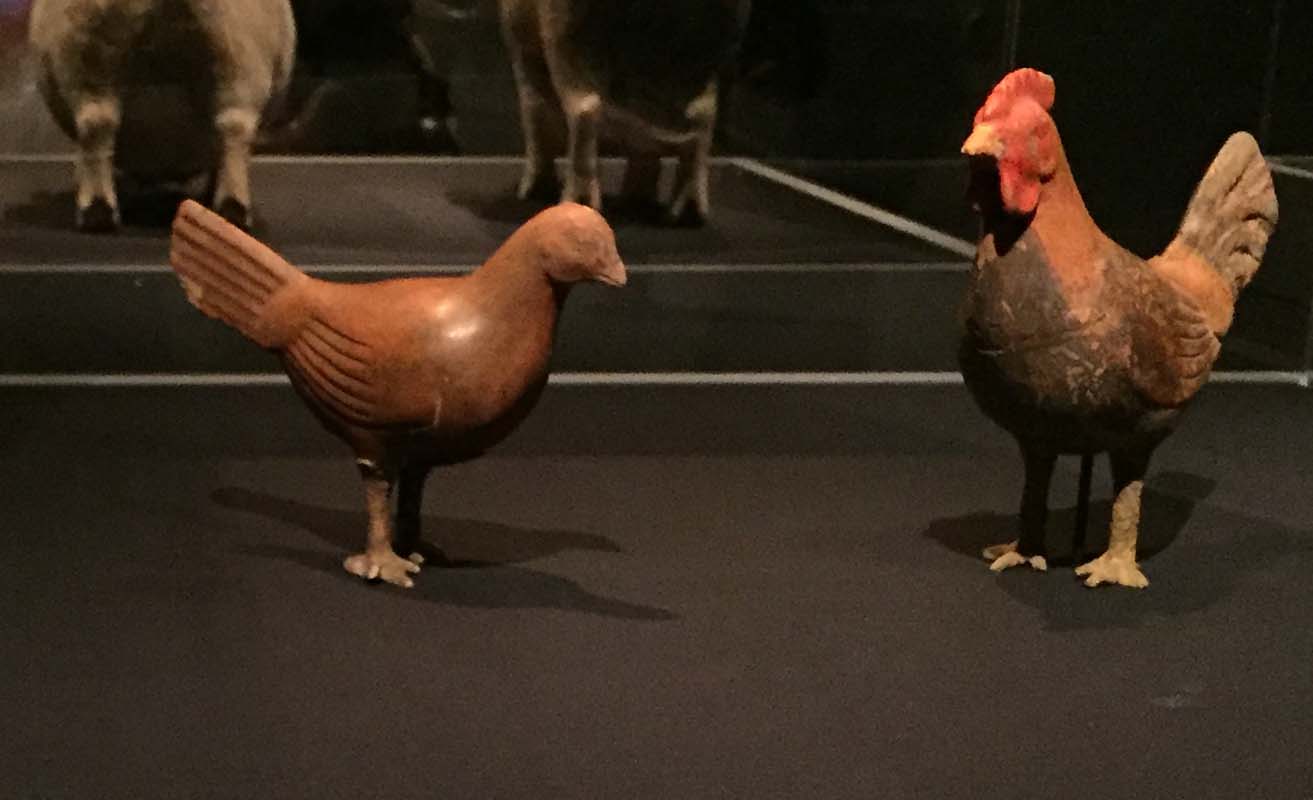
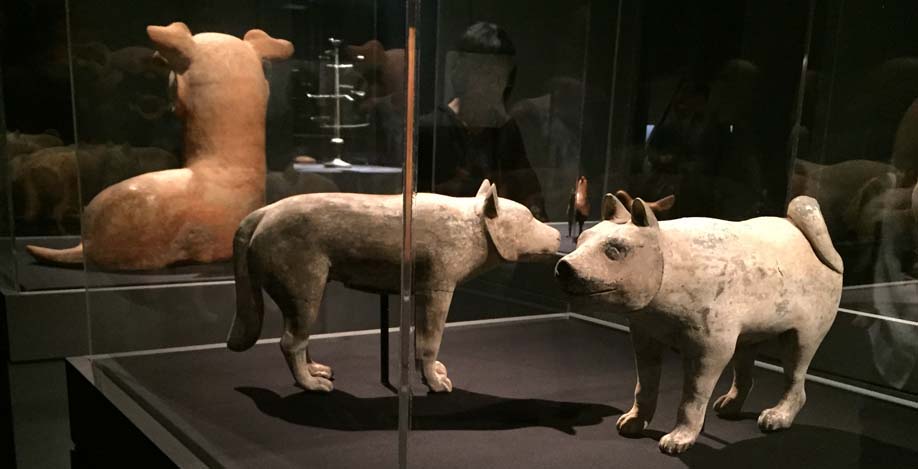
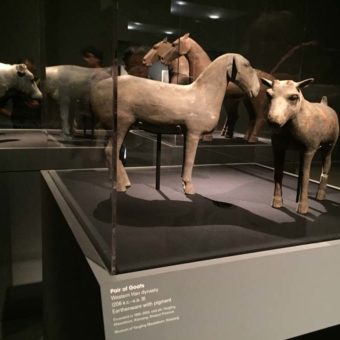
The Importance of Horses
Horses were central to life in the Qin and Han Dynasties. It is no wonder that the royal tombs contain so many beautifully modeled horses. The Qin Dynasty (221-206 B.C.) preceded the Han Dynasty which overcame it. This was the first dynasty of Imperial China. The Qin were known for their expert knowledge of raising horses. They used multiple horses to pull chariots on the battlefield. From the tomb evidence, it is clear that there were usually four horses and three soldiers in each chariot. Thirty-two modeled horses alone were found in one royal tomb. These Qin war horses were sturdy with pointed ears, trimmed manes, and knotted tails.
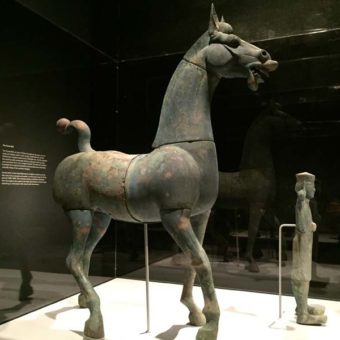
Life with Animals
This model of a multi-story house shows typical accommodation of the period. The people lived upstairs while the pigs lived downstairs. This type of elevated house shows continuity with houses in Southern China today.
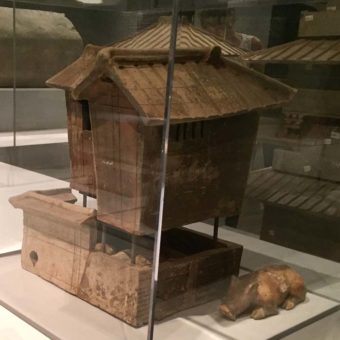
Domestic Animals
The beautifully modeled earthenware animals in these photos were found a Yangling. They were in the mausoleum complex of Emperor Jing who ruled form 157 to 141 B.C. Tombs were meant to contain a good supply of goods and utensils used by a living person. These animals were probably intended to serve as a food supply for the Emperor in the afterlife. They are part of the collection of the Museum of the Yangling Mausoleum in Xiangang, China. These animals were excavated fairly recently, between 1995 and 2003.
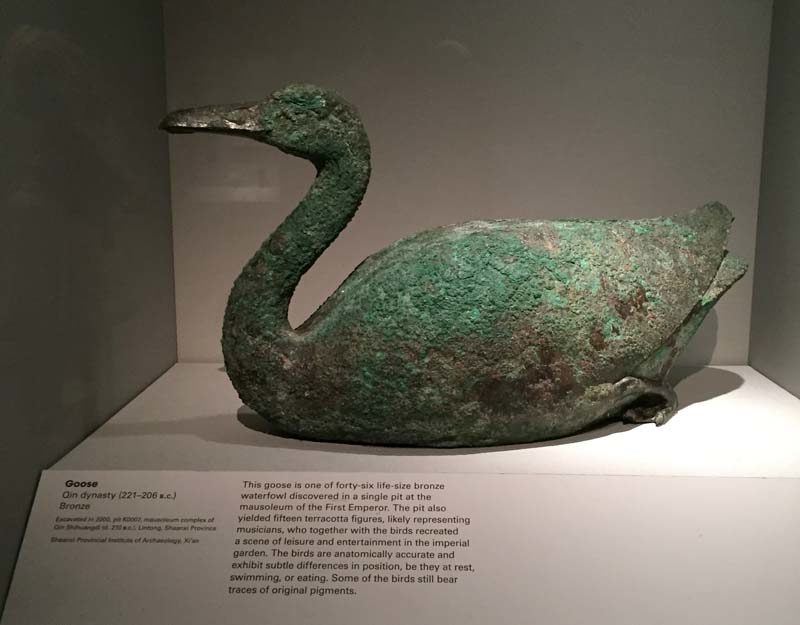
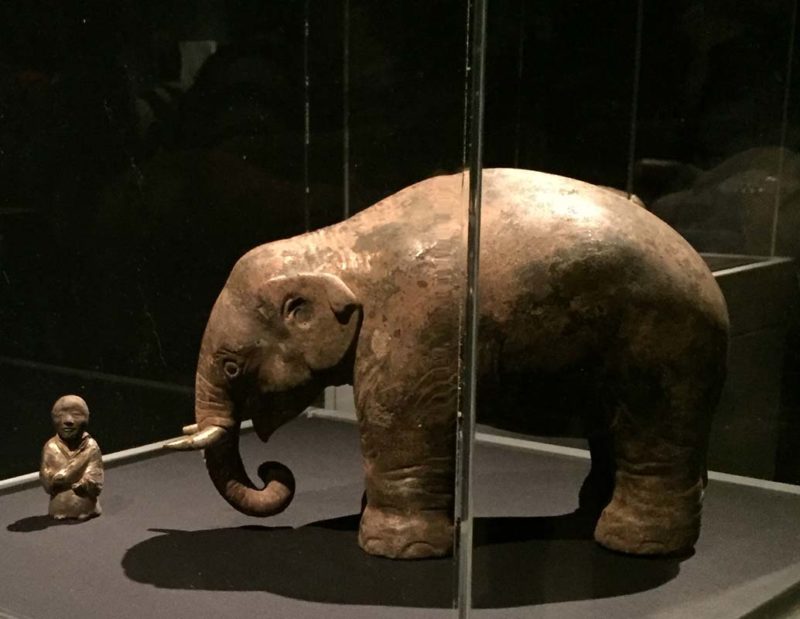
Exotic Animals
This lovely little gilt-bronze sculpture of an elephant and groom is another treasure uncovered in a Han Dynasty tomb. Elephants were no longer living in central China, but this sculpture was clearly based on a real animal, brought in as a rare exotic. Bears, like this jade bear from the Han Dynasty, are native to China. They were kept in zoos of the Imperial Court and made to perform or fight. The rhino, like the elephant, was another exotic imported animal collected by the ruling class.
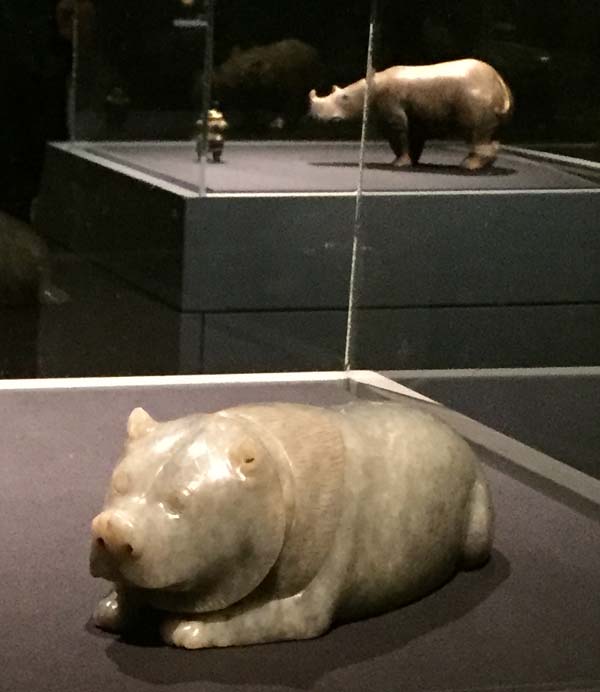
The Age of Empires is a blockbuster show filled with wonders. It is on view at the Metropolitan Museum in New York through July 16.
